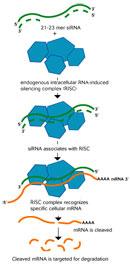Of the few people who know about the Nobel Prizes that were given out last week, science students, journalists and the like, the only relevant factor discussed seems to be the prestige the related school receives when one of their well-funded researchers wins the prize for intellectual prestige. There is absolutely no mention of RNAi, eukaryotic transcription, or CMB-otherwise known as the winning topics in the categories of Medicine, Chemistry, and Physics respectively. Why people do not care about the Nobel Prize is not a difficult question, obviously scientists aren’t the breed to provoke visual salaciousness or auditory trances in the manner that film stars and musicians do. Instead they create whirlwinds of chaos, so difficult to transcend only appreciation for the inner-workings of the mind can allow one to penetrate their form of art/delusion. Whereas sensory game is of cosmic value, for I am the first to revel in the creation that is Brangelina, once a year it is time to give tribute to these magnificent minds.
The prize for Medicine and Physiology went to Craig Mello (of UMass) and Andrew Fire (of Stanford), who discovered a method of gene regulation. Once experiments clearly show how to harness this ability, it will be possible to prevent viruses seizes, or from passing on undesirable genetic sequences such as an extra thumb. Their discovery of RNA interference (RNAi) showcases a method in which the cell, when it sees something going wrong, does the opposite. The DNA holds the code to every aspect of one’s body, but not every part of this code in interpreted and acted upon by every cell. The code can create blue eyes or an allergy to water depending on its specifics. RNA copies the part of the code being acted upon and delivers it to the cytoplasm- the part of the cell that synthesizes the protein that are the ‘building-blocks of life’. RNAi are the eyes in this process, and once the mistake is perceived, the message is prevented from being delivered through the messenger RNA (mRNA) to create the protein, which would result in the undesired outcome. There are two major problems that occur within a cell resulting in many different ailments. The first is a virus, which forces the cell to replicate the viral code through mRNA, not the desired one within the DNA of the cell. The other major problem is that of transposons, or DNA sequences that are accidentally scrambled, causing completely different results than those intended by the genes. With the RNAi mechanism, the mRNA is destroyed when odd behavior arises and therefore, cannot replicate viral material nor further reproduce the scrambled sequences. Harnessing the RNAi to detect certain ‘bad’ sequences from either of these scenarios is the interesting part and there has been a ton of progression in the experiments that conduct this.
This silencing of sequences opens up a world of possibility in biotechnology and medicine. Besides silencing the ability of HIV to replicate, one can silence obesity, cardiovascular disease, even that which causes white flowers instead of deep purple ones (the original experiment that kick-started this research). Now if only there was a similar mechanism among humans, so if one silenced the elitist affiliation for different schools for actual consideration in the myriad of thought arising from them. Maybe then one can understand that it isn’t a schools name, which produces great science, but the support of those interested.





















































